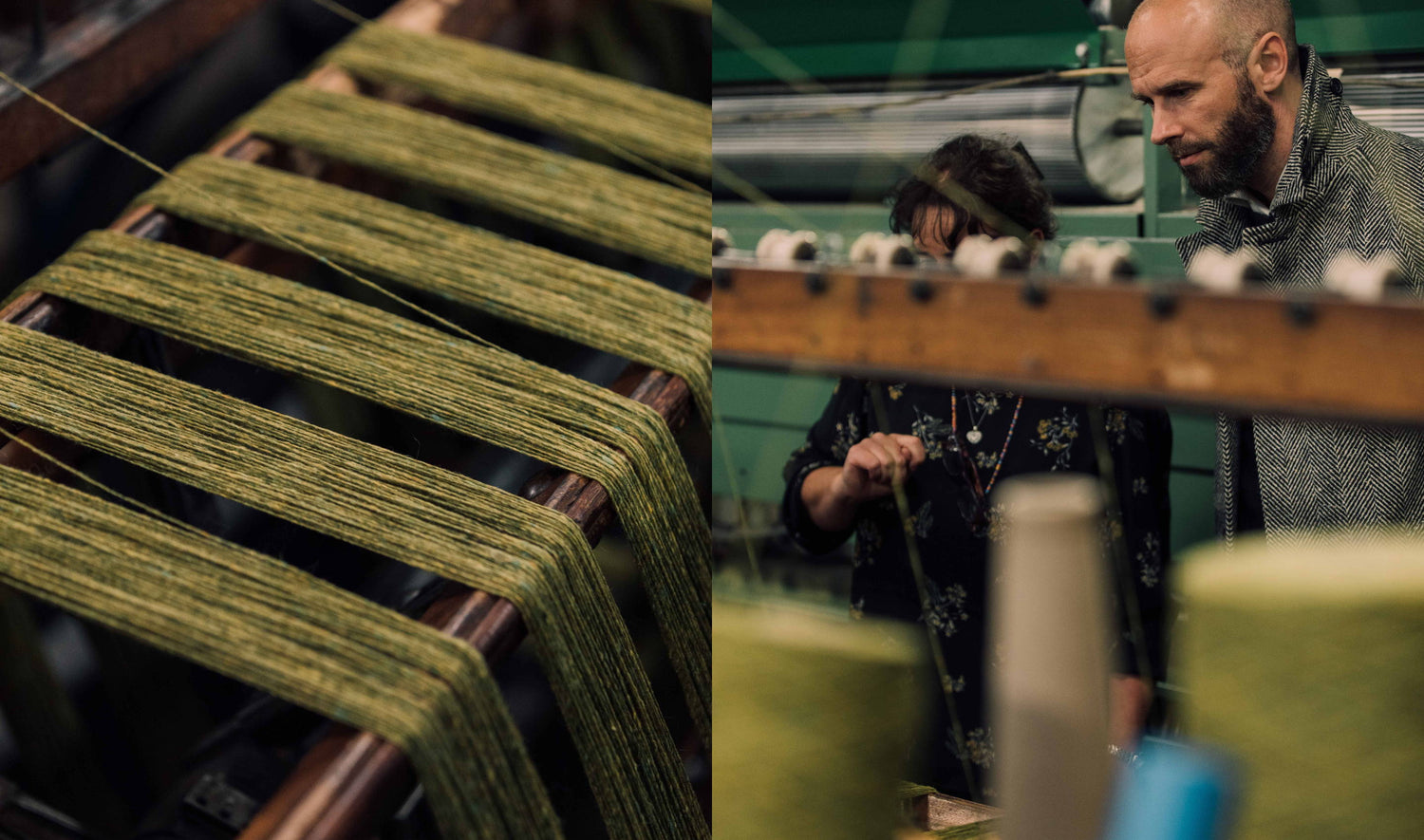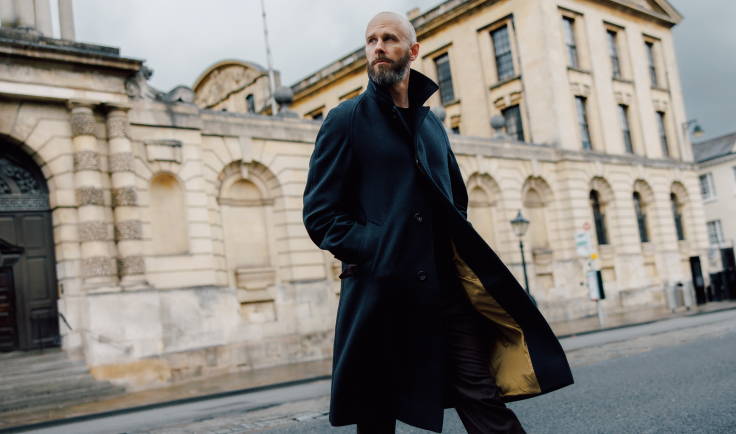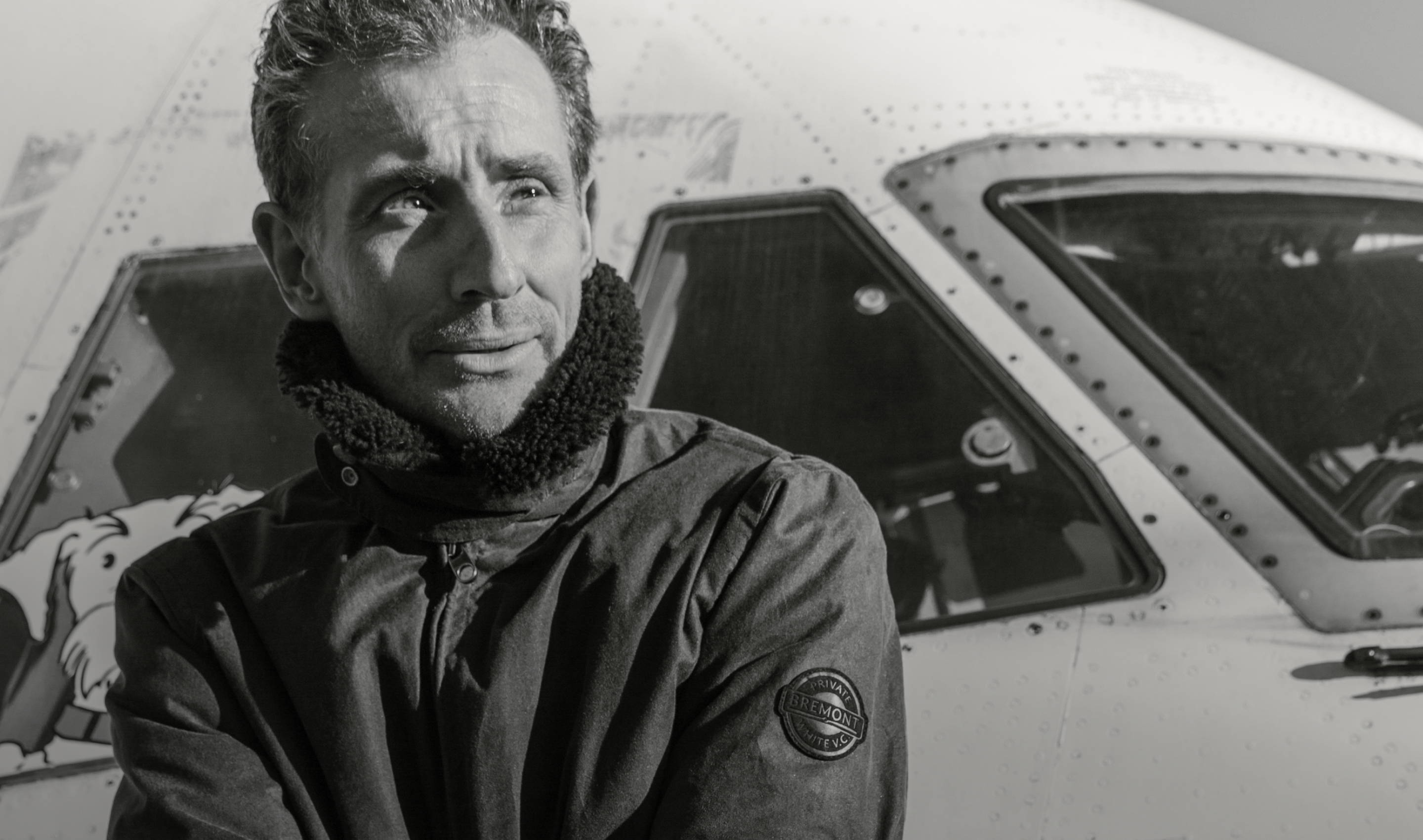Words By Simon Cromtpon
Time To Read: 6 minutes
Jamie and I travelled to Donegal Yarns recently, to see where the historic yarn is spun, right on the wind-battered coast of Ireland.
It’s one of the few traditional sites of manufacture in the British Isles I haven’t visited, and it seemed like good timing, given our new iteration of the Donegal Coat - using yarn from the last major spinner here - was about to be released.
I found it fascinating. More interesting, if I’m honest, than I was expecting.
I’ve visited almost 100 mills, ateliers, factories and workshops over the years, and it’s easy to become blasé about it. To think they have nothing new to offer.
But as soon as we were ushered into the waiting area at Donegal Yarns - with samples of coloured fleece on the table, and a craftswoman off to one side patiently carding it - I remembered why I love these visits so much.
Words By Simon Cromtpon
Time To Read: 6 minutes
Jamie and I travelled to Donegal Yarns recently, to see where the historic yarn is spun, right on the wind-battered coast of Ireland.
It’s one of the few traditional sites of manufacture in the British Isles I haven’t visited, and it seemed like good timing, given our new iteration of the Donegal Coat - using yarn from the last major spinner here - was about to be released.
I found it fascinating. More interesting, if I’m honest, than I was expecting.
I’ve visited almost 100 mills, ateliers, factories and workshops over the years, and it’s easy to become blasé about it. To think they have nothing new to offer.
But as soon as we were ushered into the waiting area at Donegal Yarns - with samples of coloured fleece on the table, and a craftswoman off to one side patiently carding it - I remembered why I love these visits so much.
There’s nothing glamorous about a factory waiting room. It’s not a luxury hotel or a flagship store. But it’s real.
We were offered a cup of tea. The noise of the factory was audible underneath everything, as we talked. And laid out on the table were the raw materials of the yarn.
With Donegal tweed, I had always assumed the characteristic little flecks or ‘burrs’ came from some aspect of the weaving process. That it was tweaked, or made to run irregularly, in order to introduce that natural-seeming variation.
But it’s actually the types of wool in the yarn. Two are used: one regular fibre that makes up the majority of the cloth, and one shorter, actually slightly felted, that makes up the flecks.
You can see the two below, held by myself and Chris of Donegal Yarns. The one Chris is holding on the right is for the flecks.
These two are mixed together, then spun into the yarn.
Because the latter type is shorter and thicker, it sticks out or creates little slubs, which then get scattered randomly through the cloth when it’s woven.
Originally this effect came from the hand spinning and weaving, and the fact that a greater range of wool was used. It was poor cloth, woven as a cottage industry around this area of Ireland - in the same way Harris Tweed has always been woven in Scotland.
The land isn’t great for farming crops, so the local occupations were mostly fishing, grazing sheep, and using those animals for everything possible, including textiles.
Thinking back to how Jamie and I drove in, around the sides of steep hills, through small farm holdings, looking out at the mist-shrouded Atlantic, it wasn’t hard to imagine a time when this area felt very cut off, and was reliant on everything local.
Once Chris had explained the process, the coloured wool on the table in front of us took on greater significance.
You could look on a sample like the mustard yellow above, and differentiate all the colours of felted fleece that were worked in - the oranges, greens and browns. You could see the pinks that lifted a brown cloth, or the blues that lightened a green.
And of course, I appreciated more the flecks in my own coat. I was wearing our sample of the PS Donegal Coat - because it was nice to show Chris how his yarn had been used - and I looked at its yellows, browns and blues.
There are fewer of those flecks in this year’s version of the coat, because it is a starker pattern of black and cream. If there were too many colours, or they were too strong, they would stand out much more in this version than in last year’s dark brown, for example.
But still, I really feel it’s the thing that stops this coat being like any other regular, conservative herringbone. It’s not just grey, it’s also blue, tan, orange and white, scattered in among black and the cream stripes.
As I said, there’s nothing like a factory visit to bring you closer to a piece of clothing.
It’s the perfect antidote to a high-street chain, where all the clothes are stacked rail upon rail, hanging on thin plastic hangers, as if no one really cares what the clothes are at all. (Which is odd, when you think about it, given it’s a clothes shop.)
The rest of the tour I found interesting too, but in a slightly more geeky way. More because I had never visited a spinner, so all the machines and processes were new.
There are basically three. The first is carding, where the wool is brushed out straight, into long lines that look like yarn but have no strength - you can just pull them apart easily.
Below you can see the carding at Donegal Yarns. The advantage of materials with bright colours in them is that they stand out against the dark machines, like the pink below. It also makes it look like a 100-year-old candy-floss machine.
The last image shows me pulling apart a piece of the wool, to demonstrate how fragile it still is.
There’s nothing glamorous about a factory waiting room. It’s not a luxury hotel or a flagship store. But it’s real.
We were offered a cup of tea. The noise of the factory was audible underneath everything, as we talked. And laid out on the table were the raw materials of the yarn.
With Donegal tweed, I had always assumed the characteristic little flecks or ‘burrs’ came from some aspect of the weaving process. That it was tweaked, or made to run irregularly, in order to introduce that natural-seeming variation.
But it’s actually the types of wool in the yarn. Two are used: one regular fibre that makes up the majority of the cloth, and one shorter, actually slightly felted, that makes up the flecks.
You can see the two below, held by myself and Chris of Donegal Yarns. The one Chris is holding on the right is for the flecks.
These two are mixed together, then spun into the yarn.
Because the latter type is shorter and thicker, it sticks out or creates little slubs, which then get scattered randomly through the cloth when it’s woven.
Originally this effect came from the hand spinning and weaving, and the fact that a greater range of wool was used. It was poor cloth, woven as a cottage industry around this area of Ireland - in the same way Harris Tweed has always been woven in Scotland.
The land isn’t great for farming crops, so the local occupations were mostly fishing, grazing sheep, and using those animals for everything possible, including textiles.
Thinking back to how Jamie and I drove in, around the sides of steep hills, through small farm holdings, looking out at the mist-shrouded Atlantic, it wasn’t hard to imagine a time when this area felt very cut off, and was reliant on everything local.
Once Chris had explained the process, the coloured wool on the table in front of us took on greater significance.
You could look on a sample like the mustard yellow above, and differentiate all the colours of felted fleece that were worked in - the oranges, greens and browns. You could see the pinks that lifted a brown cloth, or the blues that lightened a green.
And of course, I appreciated more the flecks in my own coat. I was wearing our sample of the PS Donegal Coat - because it was nice to show Chris how his yarn had been used - and I looked at its yellows, browns and blues.
There are fewer of those flecks in this year’s version of the coat, because it is a starker pattern of black and cream. If there were too many colours, or they were too strong, they would stand out much more in this version than in last year’s dark brown, for example.
But still, I really feel it’s the thing that stops this coat being like any other regular, conservative herringbone. It’s not just grey, it’s also blue, tan, orange and white, scattered in among black and the cream stripes.
As I said, there’s nothing like a factory visit to bring you closer to a piece of clothing.
It’s the perfect antidote to a high-street chain, where all the clothes are stacked rail upon rail, hanging on thin plastic hangers, as if no one really cares what the clothes are at all. (Which is odd, when you think about it, given it’s a clothes shop.)
The rest of the tour I found interesting too, but in a slightly more geeky way. More because I had never visited a spinner, so all the machines and processes were new.
There are basically three. The first is carding, where the wool is brushed out straight, into long lines that look like yarn but have no strength - you can just pull them apart easily.
Below you can see the carding at Donegal Yarns. The advantage of materials with bright colours in them is that they stand out against the dark machines, like the pink below. It also makes it look like a 100-year-old candy-floss machine.
The last image shows me pulling apart a piece of the wool, to demonstrate how fragile it still is.
This is no less impressive, but harder to get a handle on, given the speed at which it’s done.
Still, most of the machinery at Donegal Yarns is old, some of it being as much wood as metal.
Some even dates from when the factory was set up, at the beginning of the 20th century - as a local government project to bring home-based crafts all together.
The resulting ‘hanks’ of wool have to be washed and dried - to remove as much of the natural oil as required - before it can be spun.
That’s the hanks below, looking almost like seaweed, fresh from a local catch.
It’s actually a great way to get a sense of how the yarn would be like if it was woven into a length of cloth, and I found myself fantasising about orange, yellow and biscuit-coloured coats as we walked around the washing and drying rooms.
Then the yarn is spun. At speed, onto the cones you (or realistically I) see at mills being loaded onto looms for weaving.
This is no less impressive, but harder to get a handle on, given the speed at which it’s done.
Still, most of the machinery at Donegal Yarns is old, some of it being as much wood as metal.
Some even dates from when the factory was set up, at the beginning of the 20th century - as a local government project to bring home-based crafts all together.
And today it’s last large spinner in the area. There are a couple of small operations, but mostly doing weaving as well, and mostly for interiors.
Which of course makes it even more special. Thank you to Chris and all the team for making us so welcome, and for answering all my painstaking questions.
It makes my coat - and all the others we have made and will make - feel so much more personal.
More on the history of Donegal tweed on the Donegal Yarns website.
Photography: Jamie Ferguson @jkf_man
THE PERMANENT STYLE DONEGAL OVERCOATS
And today it’s last large spinner in the area. There are a couple of small operations, but mostly doing weaving as well, and mostly for interiors.
Which of course makes it even more special. Thank you to Chris and all the team for making us so welcome, and for answering all my painstaking questions.
It makes my coat - and all the others we have made and will make - feel so much more personal.
More on the history of Donegal tweed on the Donegal Yarns website.
Photography: Jamie Ferguson @jkf_man






Leave a comment
This site is protected by hCaptcha and the hCaptcha Privacy Policy and Terms of Service apply.